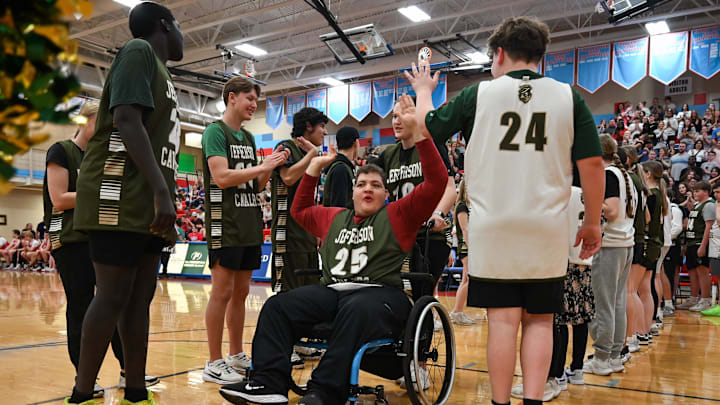Unified Sports represents a revolutionary approach to athletics that brings together athletes with and without intellectual disabilities on the same teams. As a cornerstone program of Special Olympics, this inclusive sports model has transformed how communities view competition and belonging.
Through shared training, games, and teamwork, Unified Sports breaks down barriers while building understanding between participants of all abilities. The impact extends far beyond the playing field, creating lasting change in attitudes and relationships. Here, we’ll break down how this movement began its journey from concept to global phenomenon.
Origins and evolution of Unified Sports
Unified Sports originated in the 1980s under the Special Olympics umbrella. Launched as a response to the need for more integrated sports opportunities for people with intellectual disabilities, Unified Sports grew in popularity. When you bring together athletes with and without intellectual disabilities to compete together, the impact is positive for all involved. Since then, it has grown into an international movement, with countries implementing their own Unified Sports programs.
How Unified Sports work
Structure is key to the success of Unified Sports programs. Teams often combine equal numbers of athletes with intellectual disabilities and partners without disabilities. Partner matching emphasizes the importance of grouping based on age and ability level. By emphasizing shared skill levels and group play, modifications are limited and only necessary to ensure fair competition among athletes.
Types of Unified Sports programs
There is a Unified Sports program for most interested athletes. Competitive Unified Sports programs are the most structured, with leagues and tournaments for athletes to regularly train and compete for medals. Competitive programs follow official rules for each type of sport. Another type of program, the Player Development model, focuses on providing training for athletes while incorporating new skill development. For a more relaxed and non-competitive environment, athletes may choose recreational Unified Sports programs.
Goals and mission of Unified Sports
Unified Sports provides social inclusion through shared experience. By breaking down stereotypes and promoting understanding of people with different intellectual disabilities, Unified Sports programs foster opportunities for leadership and empowerment. Special Olympics reports 82 percent of family members in the U.S. with athletes in Unified Sports programs report improved self-esteem among participants. For athletes with and without disabilities, it also offers lifelong friendship through teamwork.
Benefits for athletes and partners
Other emotional and social benefits of Unified Sports include increased confidence, better communication skills and social connection, according to research from Special Olympics. Many middle and high schools have integrated Unified Sports options into their athletic programs. According to 2023 research from the journal Adapted Physical Activity Quarterly, participation in school Unified Sports programs “may increase social participation of students with intellectual disabilities.”
Some athletes may even gain job or educational opportunities through Unified Sports. And like any form of athletics, the physical benefits are significant too, helping participants improve their health and skill development. Athletes and partners say Unified Sports made them healthier with 91 percent also reporting improved skills and 85 percent of athletes exercising more every week after participating in Unified Sports.
Special Olympics and Unified Sports relationship
Unified Sports programs continue to grow internationally. As a flagship program of Special Olympics, Unified Sports are featured prominently in regional competitions and the World Games. Comprehensive training is available for coaches and volunteers. According to Special Olympics, more than 1.4 million people around the world participate in Unified Sports programs, and at the 2023 Special Olympics Games in Berlin, 16 unified sports were represented.
Unified Sports on the global Stage
Today, Unified Sports programs are available in more than 190 countries, with nearly 2 million participants. Global celebrities, sports figures, and major sporting organizations, including the NBA and Major League Soccer and international tournaments like the X Games, have embraced the unified model with competitions, resources and visibility. In December 2025, Special Olympics will host the first ever Unified 3x3 Basketball World Cup, in San Juan, Puerto Rico.
Challenges and areas for growth
Despite its success, many Unified Sports programs face ongoing challenges in acquiring sustainable funding and connecting to underserved communities. Limited resources for facilities or equipment may provide challenges for some regions, including ones who’ve just launched Unified Sports programs. Others encounter misconceptions about the abilities of participants with intellectual disabilities. Facilitators continue to innovate program delivery and allocation of resources in an effort to address these challenges.
The future of Unified Sports
Regardless of ongoing challenges, the future of Unified Sports appears bright. School and university participation continues to increase, while opportunities for leadership — including coaching and advocacy roles — are growing. By embracing technological innovation like virtual training programs and digital platforms, Unified Sports will offer more expansive chances for inclusion. These new initiatives and opportunities suggest a near-future where inclusive sports are the norm.
Why We Play features stories about the power of sports to bring us together, overcome obstacles, make positive change and reach everyone. Read more here.
